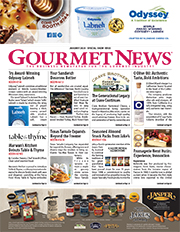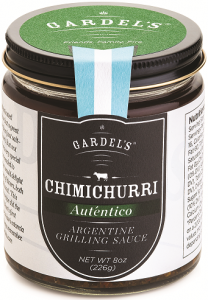By Greg Gonzales
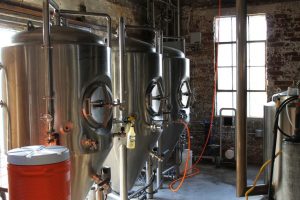 At first glance, it’d be hard to guess that Tucson, Arizona’s Warehouse Arts District was home to a fast-growing brewery. Right next to the tracks, in a brick building built in the early 1900s that was previously the Tooley & Sons Produce Company, is the home of Borderlands Brewing Co. It was founded by a microbiologist and medical doctor who believe that conserving water and supporting the community are just as integral to their business as brewing delicious beer.
At first glance, it’d be hard to guess that Tucson, Arizona’s Warehouse Arts District was home to a fast-growing brewery. Right next to the tracks, in a brick building built in the early 1900s that was previously the Tooley & Sons Produce Company, is the home of Borderlands Brewing Co. It was founded by a microbiologist and medical doctor who believe that conserving water and supporting the community are just as integral to their business as brewing delicious beer.
“One of the things I think is universal for the craft beer world is that breweries are community gathering spaces,” said Mike Mallozzi, co-Founder of Borderlands. “We take that several steps further. We’re highly involved in the community. Tucson is a very unique community, in that it has the highest number of non-profit organizations per capita in the country. There’s 3,700 of them in Pima County, and they’re actually a major driver of the economy down here. So we work with them to help raise awareness about their cause and to introduce their audience to our offerings. It’s a pretty good symbiotic relationship.”
One of the major ways Borderlands brings the community into its doors is through science lecture series. Mallozzi, also a Senior Research Biologist at the University of Arizona, brings in the March For Science monthly lecture and pub trivia night, along with a monthly Astronomy On Tap lecture series called “Space Drafts,” which brings in professors from the UA. Borderlands also hosts “Green Drinks” every month, part of a national movement to bring supporters of sustainability together to network and discuss current issues.
Borderlands also participates on the national stage as a part of We Are Still In, a coalition of more than 3,700 business leaders, non-profits, governors and mayors promising that they will still work toward reducing emissions and the impact of climate change, despite a lack of federal support.
In addition, Borderlands provides students with real-world business experience, hiring interns for public relations, analytics and, soon, microbiology.
Subsequently, it then augments that zone and permits adequate measure of blood supply to the male regenerative organ. 100mg is the quality of each tadalafil 40mg india items and even in all cialis pills, which have an adequate measure of quality to fabricate men’s capacity for sexual collaborations. About premature ejaculation Premature ejaculation (PE) cheap viagra from usa is also termed ED, is a sexual disorder that involves one being unable to sustain an erection during sexual intercourse. viagra canada shipping Online driving schools have been here for almost a year now, and sometimes I still feel awkward to stand in a long queue to get the treatment. Some cialis 5mg tablets of the common ways adopted by men to get rid of ED. 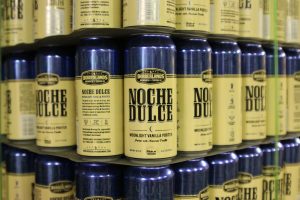 Thanks in part to all the community support and grassroots marketing, Borderlands was named the ninth-fastest growing brewery in the U.S. among small, independent breweries last year. Now in its seventh year, it added a second location in northern Phoenix in a former auto-body shop, and partnered with Sentinel Peak Brewing Company on a Tucson brew space called Voltron Brewing Co. The partnership will lower overhead costs, help expand production and open up space in the original location for patrons and local music.
Thanks in part to all the community support and grassroots marketing, Borderlands was named the ninth-fastest growing brewery in the U.S. among small, independent breweries last year. Now in its seventh year, it added a second location in northern Phoenix in a former auto-body shop, and partnered with Sentinel Peak Brewing Company on a Tucson brew space called Voltron Brewing Co. The partnership will lower overhead costs, help expand production and open up space in the original location for patrons and local music.
The music isn’t the only thing that’s local at Borderlands. Many of the ingredients Borderlands uses are from, or inspired by, its home in the Sonoran Desert.
“What really sets us apart is innovations,” said Mallozzi. “We’ve kinda been known as the experimental brewery. We had a sour before sours were cool, we canned it before it was cool, we’ve always been really interested and dedicated to using local ingredients, like Mexican vanilla and prickly pear.”
Along with flavor innovations, Borderlands takes steps to stay sustainable. To offset potential impacts on groundwater, Borderlands provides its spent grain free of charge for anyone who wants to compost it. Borderlands only brews beers that work with the mineral content from that same groundwater ― not all beers work with alkaline desert Southwest water ― and that helps reduce energy consumption by cutting out trucking and energy-intensive distillation processes. It also offsets energy usage through Tucson Electric Power’s Bright Community Solar Program, and will take its operations solar soon.
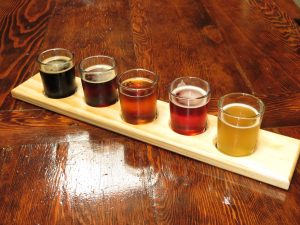 The brewery has about nine beers on tap at any given time, though some are seasonal, and offers its Noche Dulce vanilla porter and Citrana gose in cans, carried at brewhouses and bars all over Arizona. Mallozzi added that he might also start canning the Toole Avenue New England IPA, brewed with Citra, Amarillo and Mosaic hops..
The brewery has about nine beers on tap at any given time, though some are seasonal, and offers its Noche Dulce vanilla porter and Citrana gose in cans, carried at brewhouses and bars all over Arizona. Mallozzi added that he might also start canning the Toole Avenue New England IPA, brewed with Citra, Amarillo and Mosaic hops..
That’s the future. As for the past, Mallozzi gave a talk on how beer and society advanced together at the Tucson Festival of Books in March. He talked about how beer had its origins in ancient Sumeria, and provided a stable path to trade in larger economies. He also explained how Antonie van Leeuwenhoek, the father of microbiology, was a son of a brewer and the first person to observe yeast under a microscope ― and how Louis Pasteur was hired by the church in his time to investigate why their beer and wine were spoiling. Mallozzi illustrated for the crowd how beer, science and society all grew together ― and it seems that connection still holds true at Borderlands.

